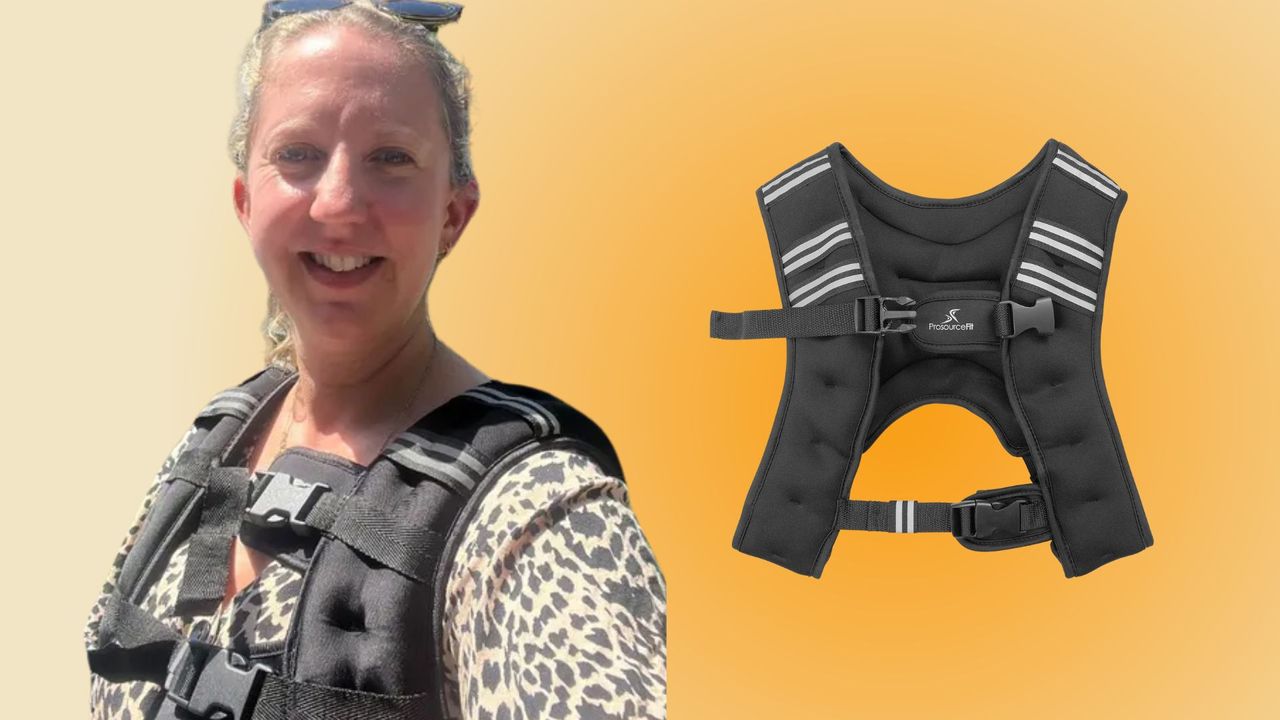
Walking is part of my daily life. I get my 10,000 steps in just by chasing after my children and doing chores. However, aside from holiday hikes towards a good view (and a pub) in my walking shoes, I rarely walk for exercise. I find strength training, running, and swimming much more satisfying.
In getting older, though, I've realised my mental health would benefit from some restorative walks and time away from my desk during the day. I live in an area with plenty of green space, and I need to make better use of it.
I'm still limited on time, so my walks would have to replace one of my workouts. To do this, it would have to help maintain my strength and muscle tone, just as the workouts I'd be missing would. After weighing up the best weighted vests and choosing one for myself, I took on the challenge of walking 30 minutes a day with one for two weeks. Here's what happened.
What is a weighted vest?
A weighted vest looks like a running vest or a cropped gilet. It's designed to wrap around your back and chest, with clasps at the front. It contains weights or small sandbags, ranging from 5kg to 30kg, which add extra resistance to every step.
This extra resistance on top of your body weight adds another intensity level to any walk or other exercise, forcing you to work harder to complete the same movement. They are also used in a weighted vest workout. For those who want to improve their aerobic fitness, boost strength, lose weight, or perform better in sport, this simple accessory is well worth the investment.
Shop weighted vests
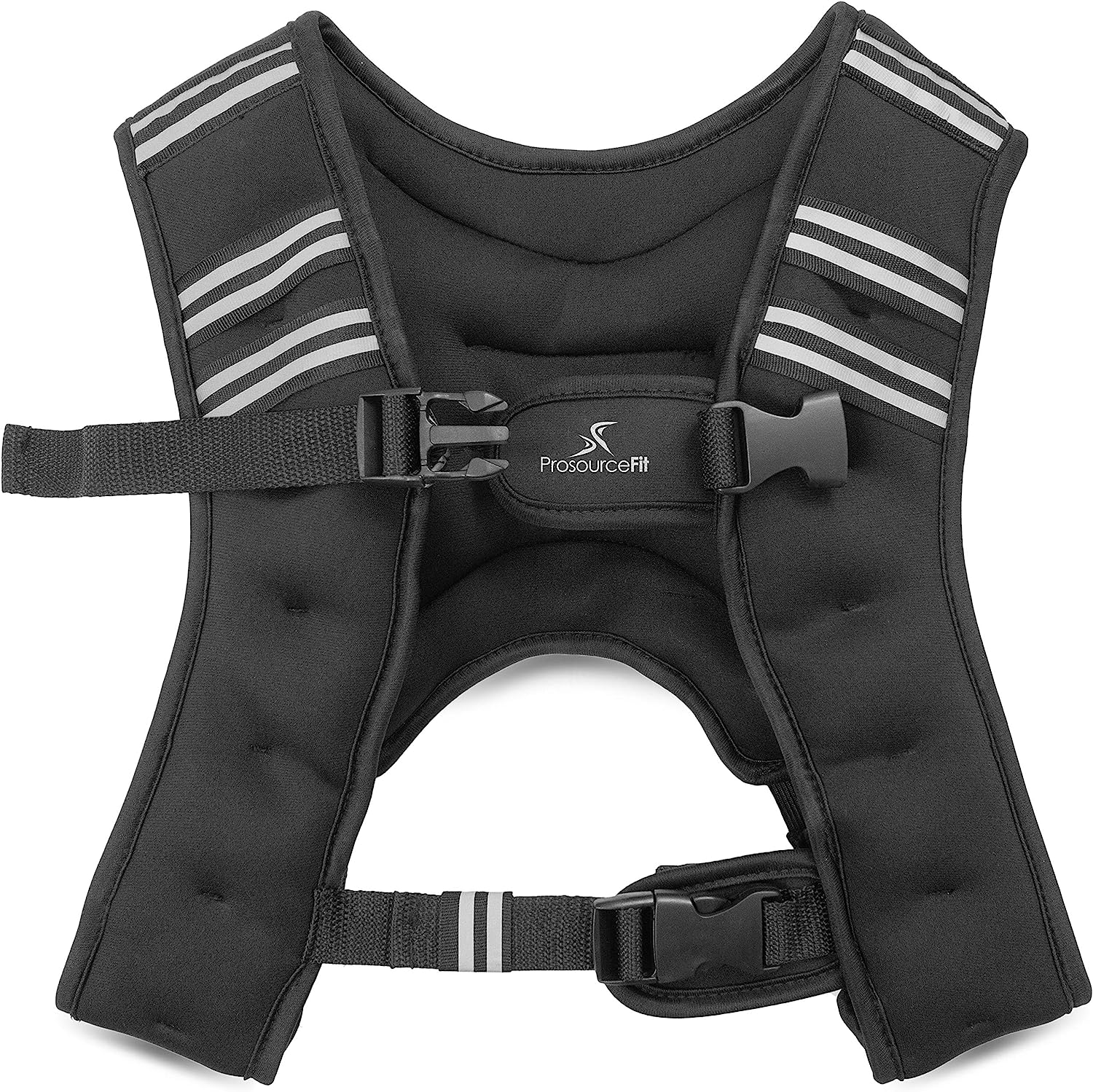
This was the weighted vest for walking that I tried. I thought it was an excellent choice as a beginner. The adjustable straps make for a snug fit, without rubbing, and the pocket on the back is handy to store keys and other essentials. However, a vest with weight bags that can be added or taken out might have been better, as then I could have started a bit lighter and built up gradually.
I think the 12lb (6kg) weight was the right challenge for me, as I have some strength training experience under my belt.
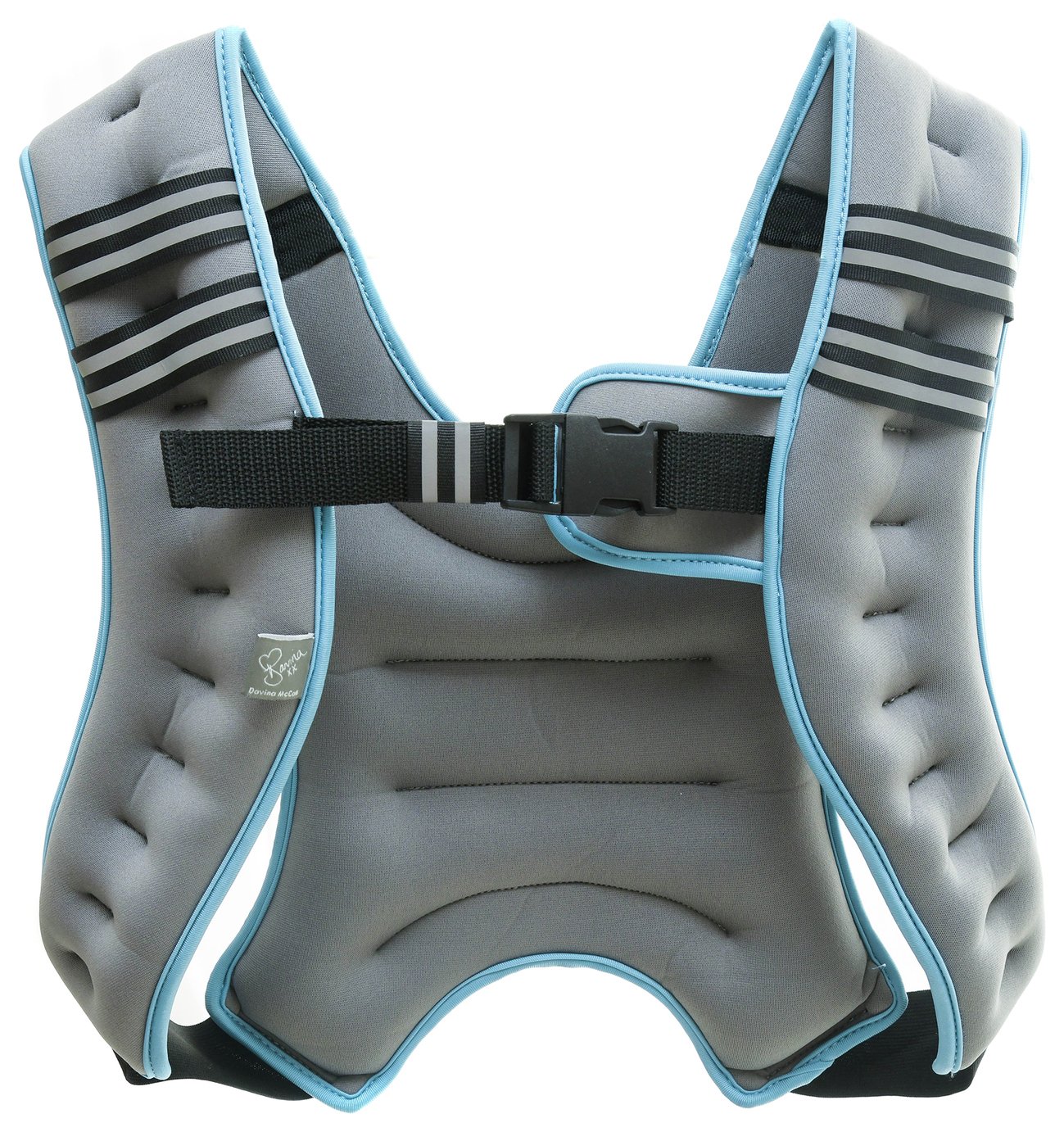
For under £25, this is an excellent option for beginners looking to start wearing a weighted vest for walking. This Davina McCall-approved vest is lighter than the one I tried at 3kg and made of neoprene, which may also be more comfortable, although the weights still aren't removable.
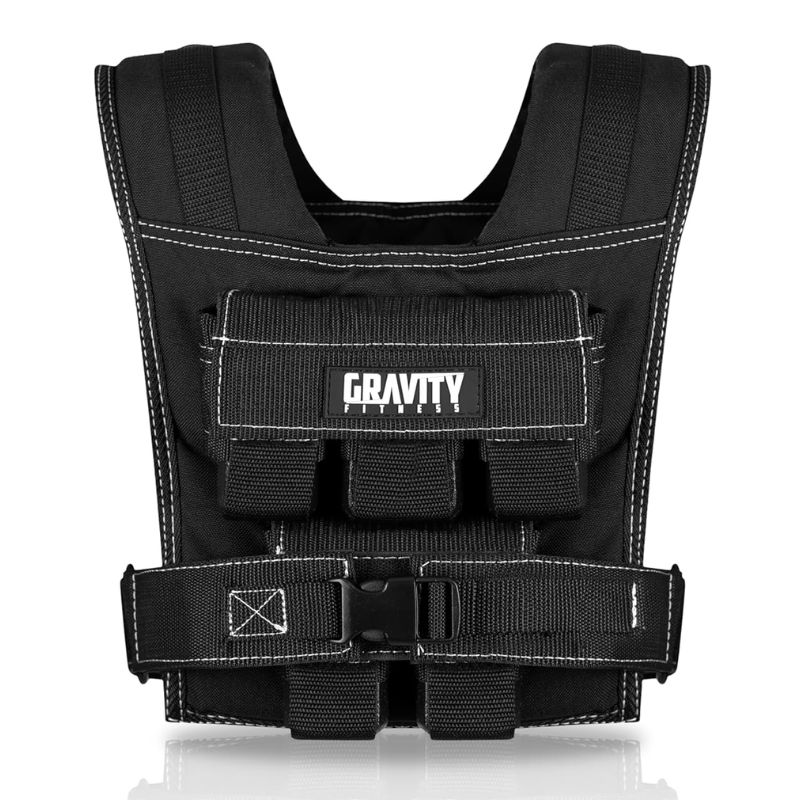
Though this weighted vest from Amazon is more expensive than others, it goes from an impressive 10kg to 30kg, and it's completely adjustable, so you'd only have to buy one as a beginner and work your way up the weights as you get stronger.
Benefits of a weighted vest for walking
1. Build strength and endurance
The key to getting stronger is putting your body under pressure it hasn't felt before. Of course, you could do this with a callisthenics workout for beginners or an old-school dumbbell workout at the gym, but you could also do it as you move around the house, see friends, and go to the supermarket.
On my first wear, I was surprised by how heavy the vest felt. Given I carry my children around all the time and lift weights at home twice a week, I thought a 6kg vest wouldn't feel that heavy. I was wrong. It felt really uncomfortable when I first put it on, and this was an unnatural feeling for me.
I found the pressure on my chest and back quite hard to get used to and even slightly claustrophobic. I definitely felt a lot more breathless when walking up the stairs in it during my first session. I could feel that my body was working harder.
A weighted vest for walking felt very different from walking with a heavy backpack, which I’m used to when on walks or hikes. In the first few days, I had to focus on my posture so my shoulders didn't round to compensate. I found myself engaging my core more than I normally would to stay upright.
2. It's easy to include in your day
I realised I wouldn’t be immediately heading for a long, early morning walk in my vest once I put it on. Being so heavy, I didn't want to set out only to struggle to make it home. So, I decided to wear it around the house for the first few days.
Over the two weeks, I wore my weighted vest while doing household activities, like washing up, tidying, and walking around the garden and up and down the stairs. Even doing this raised my heart rate and left me slightly sweaty.
When it came to wearing the weighted vest on an actual walk and a spot of walking yoga, I decided not to go too far from my house. The idea of having to take it off and carry it home was not appealing, so I started with distances and times I knew I’d be able to do. A 15-minute walk around the block, upping it by 5 minutes every other day, seemed like a good place to start.
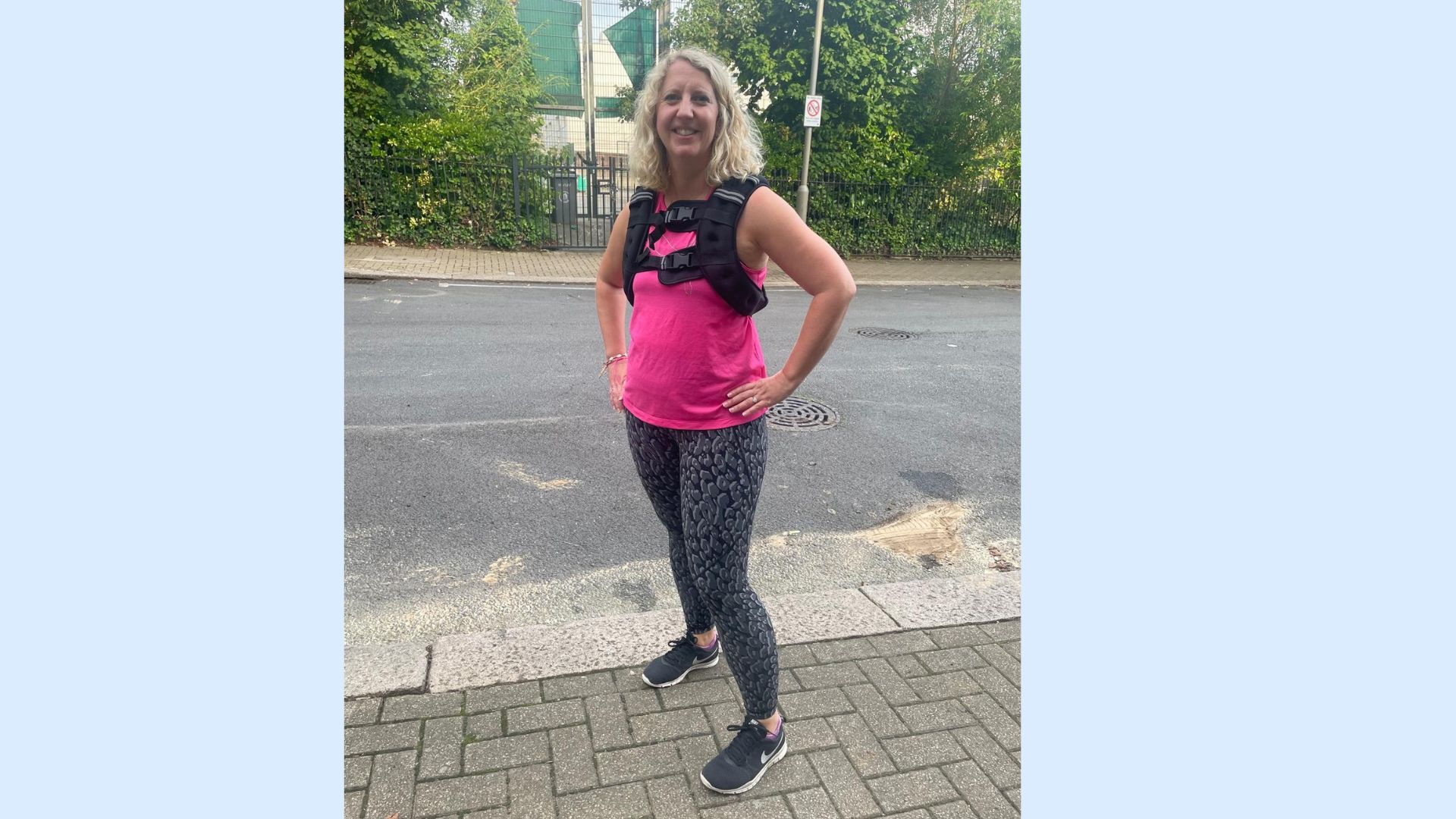
3. It's a full body workout
When I increased the length of my walks to 15 to 20 minutes every day, I started to feel the burn in my quads and calves. This is why a weighted vest is a great form of strength training for runners, hikers, and all those who doing cardio exercise.
I found the pressure on my shoulders felt quite intense when my arms were hanging down by my sides, so I held onto the vest to support myself. Once I got into my stride and after the first few short walks, it felt easier.
Wearing a weighted vest for walking is a full-body workout - don't let anyone tell you otherwise. I had to listen to music or podcasts to distract myself from the weight around my chest. After a short while, it became more enjoyable. I even started to feel smug when walking amongst ‘normal’ walkers who weren’t wearing a vest - apart from the day it rained and I couldn’t run home as it was too heavy.
4. Suitable for all
I’m hypermobile - my right shoulder can dislocate quite easily during regular strength training, so I did make sure I was extra cautious when putting the vest on and taking it off, but otherwise, I didn't have to worry. Normally, I have to be very careful when using dumbbells and kettlebells.
It was easy to put on for a quick 20-minute walk around my local area or to the park, and it would leave me feeling physically tired after, making it a time-efficient exercise.
Had I opted for an adjustable weighted vest for walking, I could have removed some of the weights and started at an easier level before working my way up to 6kg and beyond. If you're new to strength training or weighted workouts, I'd recommend this to get fitter.
5. Improve bone density in perimenopause
A weighted vest may be particularly excellent for women approaching or going through perimenopause, where muscle and bone density naturally decline. "Carrying weight on your body improves bone density and stimulates bone growth due to the increased load, which is important for preventing osteoporosis,” says personal trainer Anya Russell.
According to the Royal Osteoporosis Society, 50% of women over the age of 50 will break a bone largely due to osteoporosis during their lifetime, so exercising to increase bone strength is important.
Dr Mary Claire Haver, a menopause specialist and bestselling author with over 2 million Instagram followers, is also a fan of the weighted vest for gym and treadmill workouts. "These are great for osteoporosis prevention and for strength and for muscle building," she says in an Instagram reel. "I'm always wearing one of these when I walk on the treadmill."
6. A weighted vest can help you lose weight
If weight loss is your goal, wearing a weighted vest while walking or working out is an excellent idea as it's deemed "safe" and "feasible" by the experts and leads to greater calorie burn, per studies by the University of Gothenburg and Wake Forest School of Medicine. Working harder raises the heart rate and forces your body to burn more energy (calories) to fuel and complete the same activities. The more calories you burn, the more likely you are to be in a calorie deficit for weight loss.
Benefits extend well beyond just the 20 or 30-minute walk you do. “A 10-minute brisk walk with a weighted vest will be an incredible leg workout and you'll feel it even after you've taken the vest off," says personal trainer and fat loss expert Andrew Hill. "Whilst muscles repair, energy expenditure is increased as more resources are pumped to worked muscles. In other words, your metabolism stays elevated even after you've stopped exercising." This essentially means you'll still be burning calories while sitting down, having breakfast, and getting on with the rest of your day - sans weighted vest.
"Strength-based exercises are well documented to be the most effective for maintaining a high metabolism, which is essential for fat loss, whilst consuming an increased protein diet," he says.
How much should a weighted vest weigh?
It's recommended that you don’t wear more than 4 to 10% of your body weight in a weighted vest, but if you're like me and have never worn one before, it's best to start on the lighter end. I chose a 6kg (12lbs) vest as I’m petite and not particularly strong.
"What starts feeling like a light weight soon becomes heavy after just a few minutes, and it can be quite a shock," warns PT and nutrition expert Scott Harrison. "Begin light and gradually increase it to avoid injury and early exercise burnout. You must make sure the vest fits well to prevent discomfort and negatively affect your balance and posture.
On that note, always remember that with any exercise, you must maintain proper form and keep your back in alignment to avoid strain or injury."
Stop wearing it completely if you feel any sharp or consistent pain, especially in joints like the knees and hips.
How long should a weighted vest be worn for?
Only wear it for a short time to avoid muscle strain or causing yourself pain. Hill says, “We're all different. If the weighted vest starts to cause any feeling of pain or increasing discomfort, take a break."
Try wearing the weighted vest around the house to begin with as a form of exercise snacking, so you can get a good idea of how it feels to wear it. You can also take it off and carry on with your day, without having to navigate getting home with the additional weight.
After this, try taking your weighted vest out of the house for 10 to 15 minutes at a time - and be sure to stay close to home. "It isn't fun when you wear it until fatigue and then you have to carry it for a further 30 minutes before you can put it away,” he says.







